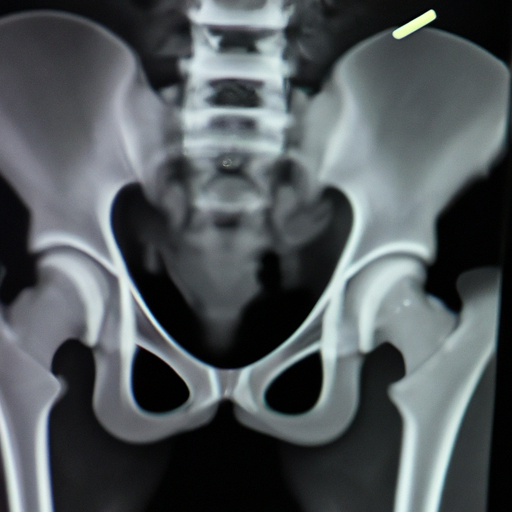-
Table of Contents
“Realign Your SI Joint for Optimal Health and Comfort!”
Introduction
Is Your Sacroiliac (SI) Joint Out of Alignment?! is a comprehensive guide to understanding and managing sacroiliac joint dysfunction. This guide provides an overview of the anatomy and physiology of the sacroiliac joint, as well as the causes, symptoms, and treatments for sacroiliac joint dysfunction. It also offers tips on how to prevent and manage sacroiliac joint pain. With this guide, you can learn how to identify and address sacroiliac joint dysfunction, so you can get back to living a pain-free life.
What Causes Sacroiliac (SI) Joint Dysfunction?
Sacroiliac (SI) joint dysfunction is a condition that affects the joints located at the base of the spine, where the sacrum and the ilium bones meet. It is a common cause of lower back pain and can be caused by a variety of factors.
The most common cause of SI joint dysfunction is an imbalance in the muscles and ligaments that support the joint. When these muscles and ligaments become weak or tight, the joint can become misaligned, leading to pain and discomfort. Other causes of SI joint dysfunction include trauma, such as a fall or car accident, pregnancy, and arthritis.
In some cases, SI joint dysfunction can be caused by a structural abnormality, such as a congenital defect or a pelvic fracture. In these cases, the joint may be misaligned from birth or due to an injury.
In addition, SI joint dysfunction can be caused by repetitive motions, such as sitting for long periods of time or performing certain activities, such as running or jumping. This can cause the joint to become overworked and inflamed, leading to pain and discomfort.
Finally, SI joint dysfunction can be caused by a combination of factors, such as an underlying medical condition, an injury, or a combination of lifestyle factors. It is important to speak with a doctor to determine the cause of your SI joint dysfunction and to develop a treatment plan that is tailored to your individual needs.
How to Diagnose and Treat Sacroiliac (SI) Joint Dysfunction

Sacroiliac (SI) joint dysfunction is a condition that affects the joints located between the sacrum and the ilium bones of the pelvis. It is a common cause of lower back pain and can be difficult to diagnose and treat. This article will provide an overview of the diagnosis and treatment of SI joint dysfunction.
Diagnosis
The diagnosis of SI joint dysfunction begins with a physical examination. During the exam, the doctor will assess the range of motion of the SI joint and look for signs of tenderness or pain. The doctor may also order imaging tests such as X-rays, CT scans, or MRIs to confirm the diagnosis.
Treatment
The treatment of SI joint dysfunction depends on the severity of the condition. In mild cases, the doctor may recommend physical therapy, exercise, and lifestyle modifications such as avoiding activities that aggravate the joint. In more severe cases, the doctor may recommend medications such as nonsteroidal anti-inflammatory drugs (NSAIDs) or corticosteroids to reduce inflammation and pain. In some cases, the doctor may recommend injections of corticosteroids or hyaluronic acid into the joint to reduce inflammation and pain. In severe cases, surgery may be necessary to repair or stabilize the joint.
Conclusion
SI joint dysfunction is a common cause of lower back pain that can be difficult to diagnose and treat. The diagnosis begins with a physical examination and may include imaging tests. Treatment depends on the severity of the condition and may include physical therapy, medications, injections, or surgery. It is important to work with a doctor to determine the best course of treatment for your individual situation.
How to Strengthen and Stabilize Your Sacroiliac (SI) Joint
The sacroiliac (SI) joint is a critical component of the human body, connecting the spine to the pelvis and providing stability and support for the entire body. Unfortunately, this joint can become weakened or destabilized due to injury, overuse, or age-related degeneration. Fortunately, there are a number of steps you can take to strengthen and stabilize your SI joint.
1. Exercise: Regular exercise is one of the best ways to strengthen and stabilize your SI joint. Focus on exercises that target the core muscles, such as planks, bridges, and squats. These exercises will help to strengthen the muscles that support the SI joint, providing additional stability.
2. Stretching: Stretching is also important for strengthening and stabilizing the SI joint. Focus on stretches that target the hips, glutes, and lower back. These stretches will help to improve flexibility and range of motion in the joint, reducing the risk of injury.
3. Posture: Poor posture can put additional strain on the SI joint, leading to instability and pain. Make sure to maintain good posture throughout the day, keeping your shoulders back and your spine straight.
4. Supportive Shoes: Wearing supportive shoes can also help to stabilize the SI joint. Look for shoes with good arch support and cushioning, as this will help to reduce the strain on the joint.
5. Physical Therapy: If you are experiencing pain or instability in your SI joint, it is important to seek professional help. A physical therapist can provide targeted exercises and stretches to help strengthen and stabilize the joint.
By following these steps, you can help to strengthen and stabilize your SI joint, reducing the risk of injury and pain. However, if you are experiencing persistent pain or instability, it is important to seek professional help.
The Benefits of Chiropractic Care for Sacroiliac (SI) Joint Dysfunction
Chiropractic care is a safe and effective treatment option for those suffering from sacroiliac (SI) joint dysfunction. The SI joint is located in the lower back, where the sacrum and the ilium bones meet. Dysfunction of this joint can cause pain, stiffness, and limited mobility.
Chiropractic care is a holistic approach to treating SI joint dysfunction. It focuses on restoring the body’s natural balance and alignment. Chiropractors use a variety of techniques to treat SI joint dysfunction, including manual adjustments, soft tissue therapy, and therapeutic exercises.
Manual adjustments are a common treatment for SI joint dysfunction. During an adjustment, the chiropractor applies a gentle force to the joint to restore its normal range of motion. This helps to reduce pain and improve mobility.
Soft tissue therapy is another common treatment for SI joint dysfunction. This type of therapy involves the use of massage, stretching, and other techniques to reduce muscle tension and improve circulation. This helps to reduce pain and improve mobility.
Therapeutic exercises are also used to treat SI joint dysfunction. These exercises help to strengthen the muscles around the joint, improve flexibility, and reduce pain.
The benefits of chiropractic care for SI joint dysfunction include improved mobility, reduced pain, and improved overall quality of life. Chiropractic care is a safe and effective treatment option for those suffering from SI joint dysfunction. It can help to reduce pain, improve mobility, and improve overall quality of life.
Conclusion
The sacroiliac (SI) joint is an important part of the body and can be easily thrown out of alignment. It is important to be aware of the signs and symptoms of an SI joint out of alignment and to seek medical attention if any of these signs and symptoms are present. With proper diagnosis and treatment, the SI joint can be brought back into alignment and the pain and discomfort associated with it can be alleviated.



